A Passion for Poinsettias
A Passion for Poinsettias
The poinsettia is the most popular plant sold during the Christmas season, and with good reason. A professionally grown poinsettia is lush and colorful…and as we approach the Winter Solstice, we need all the extravagant color we can find! Today’s post celebrates this lovely plant and answers the questions we commonly hear from our customers.
- The colorful part of a poinsettia that we consider the flower is actually the bracts, or modified leaves. They are there to attract the attention of pollinators.
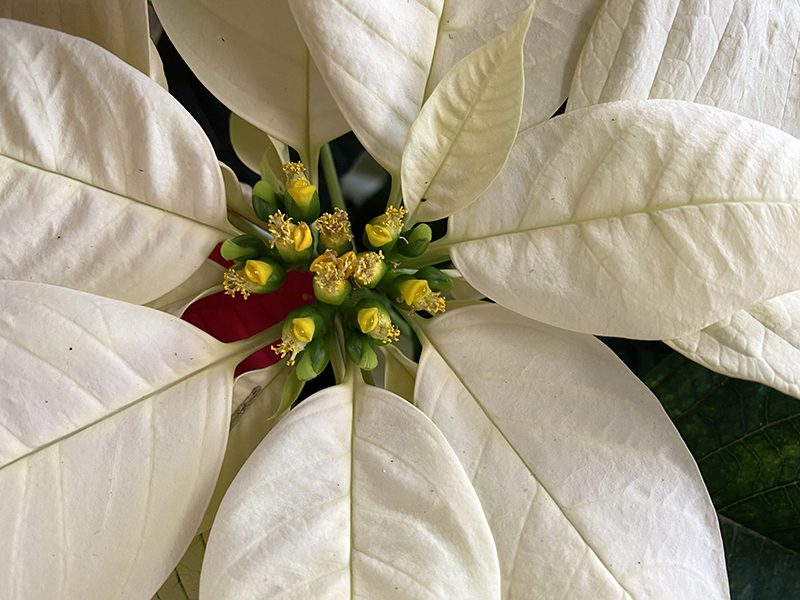
- The bracts on a poinsettia develop their color in response to longer nights and shorter days. This is why they are so colorful in December.
- Poinsettias are actually small trees that are native to Mexico, and they can grow up to twelve feet tall in the tropical climates where they thrive.
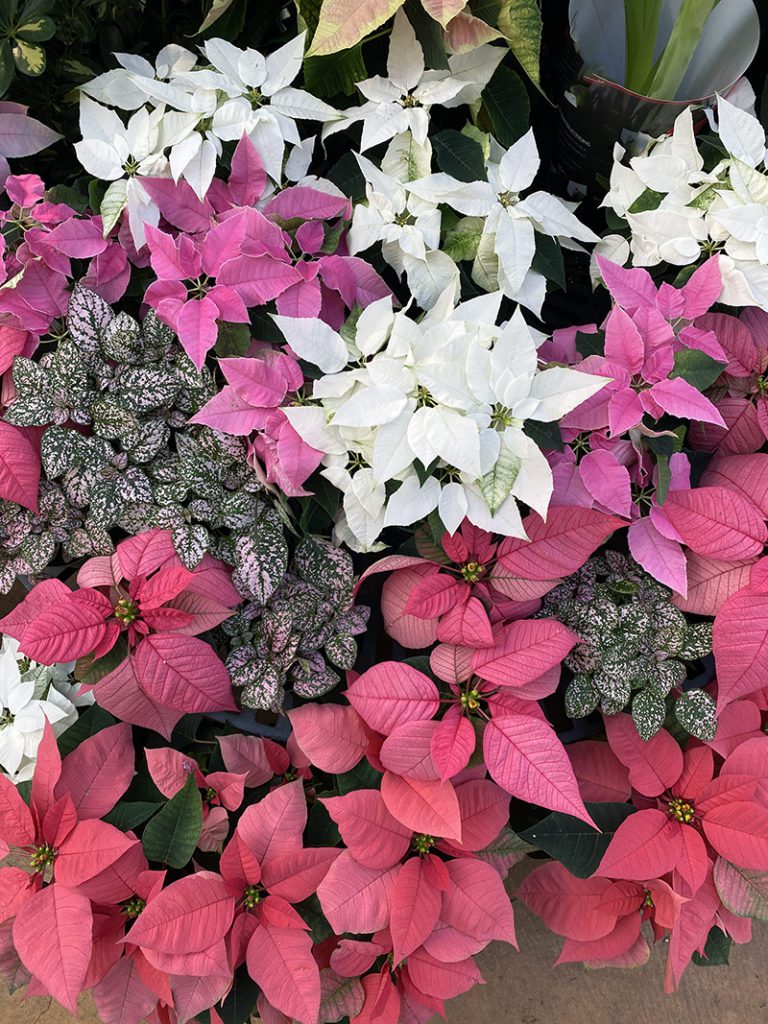
- The first US Ambassador to Mexico, Dr. Joel Roberts Poinsett, introduced the plant into the US by sending cuttings to his home in 1828. The plant’s botanic name is Euphorbia pulcherrima but the common name, poinsettia, came from Dr. Poinsett, who was an amateur botanist.

- There are over 100 varieties of poinsettias that are currently sold.
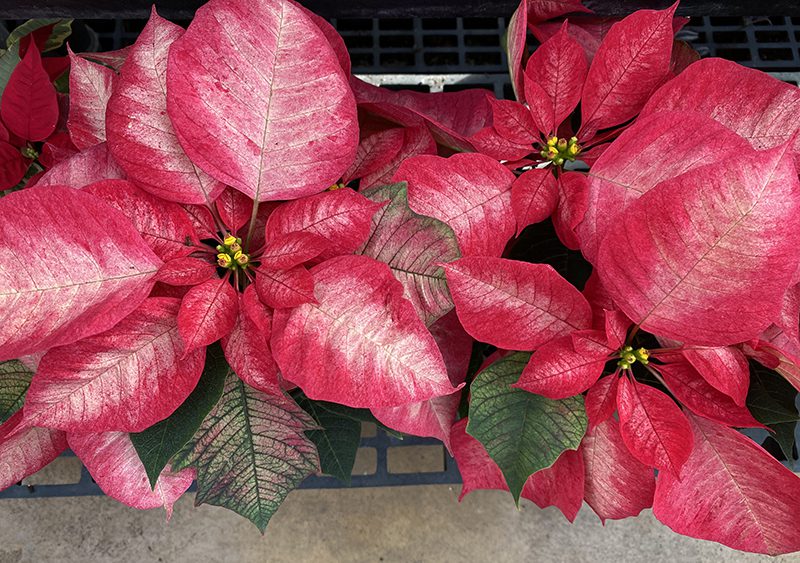
- To keep this plant looking its best through the holidays and beyond, avoid hot or cold drafts and place the plant in a very bright location where the temperature is between 60 and 70 degrees. If you buy a poinsettia on a cold day, do not leave it in the car while you do other shopping. Even a brief time below 50 degrees can cause this plant to wilt and die.
- Do not let your poinsettia get so dry that it wilts, but don’t keep it swampy wet either. Aim for an even level of moisture. If you have decorative foil around the pot, poke holes in it so the water can drain into a saucer below.
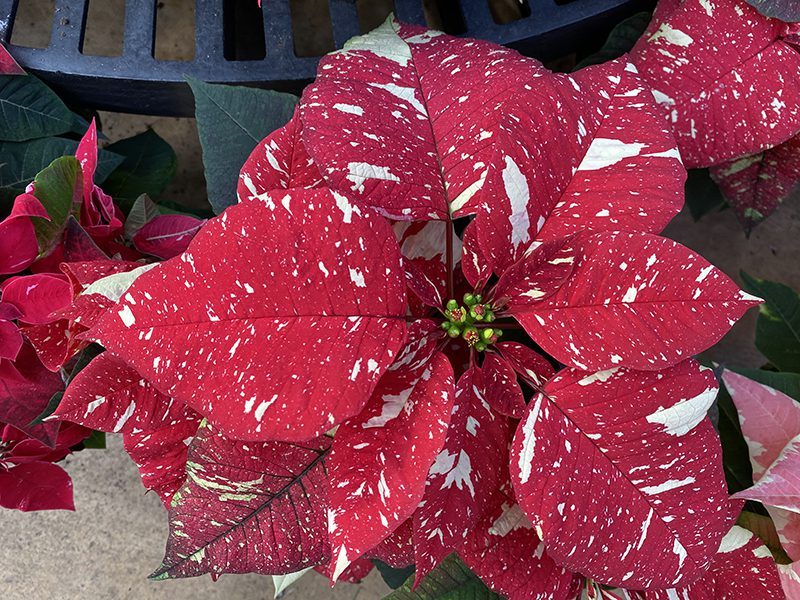
- If you want to try to keep your poinsettia from year to year, you will want to put it in a larger pot in the spring with fresh potting soil, and grow it outside over the summer. Fertilize regularly. Then in September, bring the plant indoors and grow in a sunny window, but put the plant in the closet at 4 PM every day and bring it back out to the window in the morning. They need to have 12 to 14 hours of absolute darkness every day in order to develop the color in their bracts.

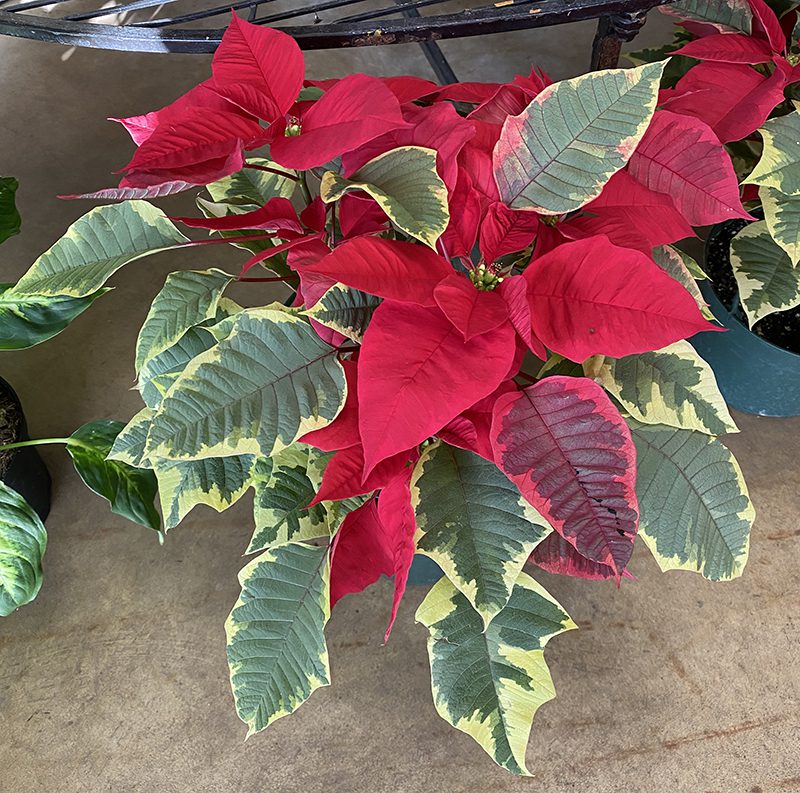
Posted in Uncategorized
1 Comment
Leave a Comment
Subscribe To Our Newsletter
Sign up for our weekly email about sales and events.

This article was so informative. I love poinsettias and hate it when it dies. From this article I’ve learned how to keep them alive for an extended period of time. I will take better care of them from now on. Thank you!!!